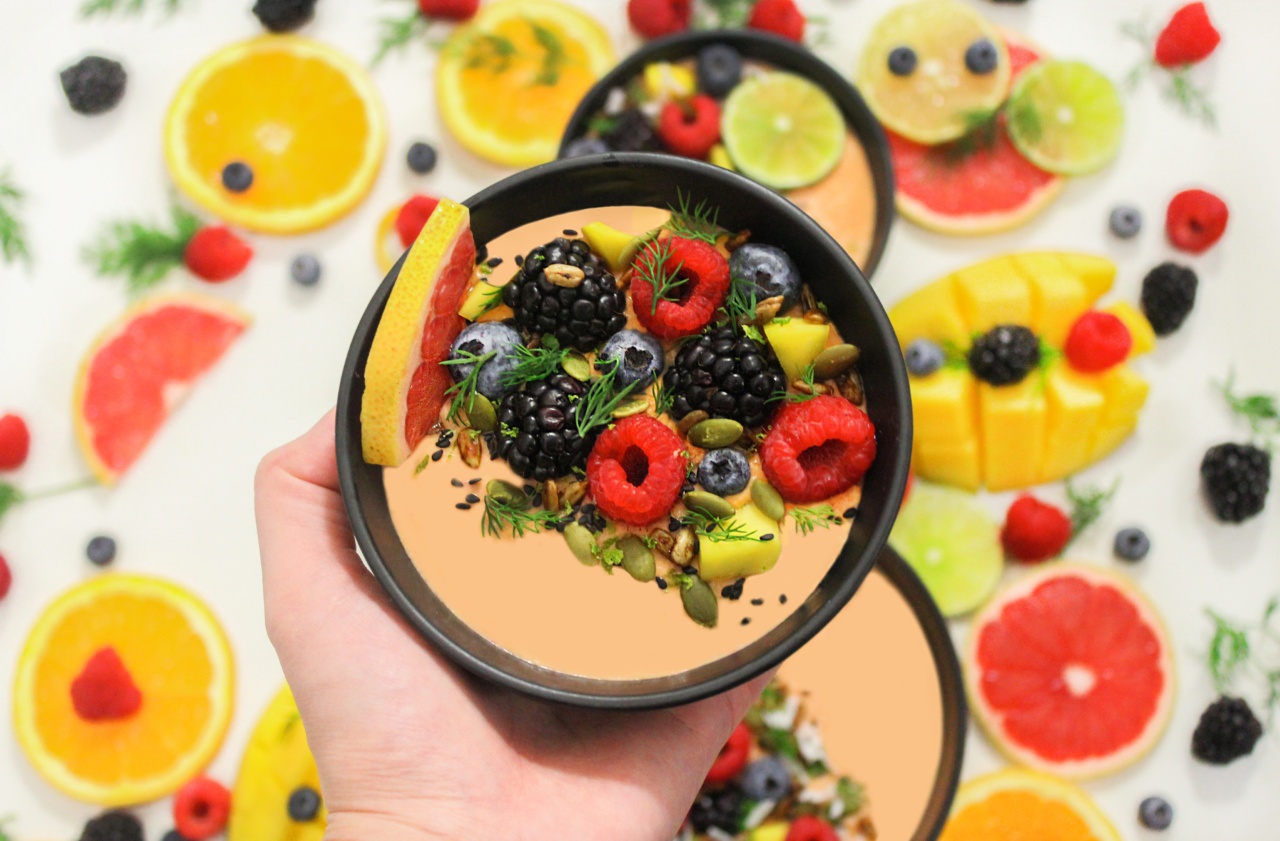Smoothies are a great way to start your day or get a quick and healthy snack in between meals. They are easy to make, customizable and packed with nutrients- or at least that’s what you thought.
Smoothies have been marketed as a healthy alternative to sugary, processed snacks, but many people are making mistakes that could be sabotaging their diet progress. Here are 30 common smoothie mistakes you could be making:.
1. Not Measuring Ingredients
One of the most important things to consider when making a smoothie is measuring the ingredients. Too much of one ingredient can make the smoothie too thick or too sweet, while too little can cause it to lack flavor.
2. Ignoring the Serving Sizes
Most smoothie recipes will have a serving size built in, but it’s important to stick to it. Drinking an entire blender’s worth of smoothie can be a sugar and calorie bomb, whereas a smaller, portion-controlled serving can be just right.
3. Using Too Much Fruit
Fruit is a great addition to smoothies for natural sweetness and added nutrients, but most Americans already consume too much sugar. Using too much fruit in your smoothie can quickly add up and give you a sugar overload.
4. Not Adding Enough Vegetables
On the other hand, vegetables are often under-appreciated in smoothies. Adding a handful of leafy greens like spinach or kale to your smoothie can help balance out the sweetness, add fiber and provide more nutrients.
Try sneaking in some veggies if you can!.
5. Not Using a High-Speed Blender
Investing in a high-speed blender may seem like an unnecessary expense, but it can make a big difference in the texture of your smoothies.
A cheap blender may not be able to thoroughly blend tough greens or frozen fruits, leaving you with chunks or a grainy texture.
6. Adding Too Many Add-Ins
Superfoods like chia seeds, nut butters and protein powders are great smoothie add-ins, but only in moderation.
Adding too many add-ins at once can create a flavor and texture overload, and may not even be necessary if you’re already getting enough nutrition from your base ingredients.
7. Not Prepping Ingredients Ahead of Time
Smoothies are supposed to be quick and easy, but if you’re spending too much time prepping ingredients, it defeats the purpose. Chop up fruit and vegetables ahead of time and store them in the freezer for easy access, or use pre-washed greens.
8. Using Juice as a Base
While juice may seem like a healthy base for a smoothie, it can actually add unnecessary sugar and calories. It’s best to use water, almond milk, coconut water, or unsweetened nut milk as a base instead.
9. Forgetting to Add a Healthy Fat
Healthy fats like avocado, nut butters and coconut oil can help to make your smoothie more filling and improve nutrient absorption. Don’t forget to include a healthy fat in your smoothie recipe.
10. Using Too Much Sweetener
Sweeteners like honey, agave nectar and maple syrup may seem like a healthier choice than refined sugar, but they still add unnecessary sugar and calories to your smoothie.
Try using natural sweeteners like dates or stevia instead, or just skip it altogether if your fruit already provides enough sweetness.
11. Not Blending Long Enough
Blending your smoothie for at least 30-60 seconds may seem like an inconvenience, but it’s necessary to fully blend all of the ingredients and get a smooth, creamy texture.
12. Drinking Too Quickly
It’s important to savor and enjoy your smoothie, instead of gulping it down quickly. Taking your time to drink your smoothie gives your body time to digest and absorb the nutrients, and can help prevent overeating later on.
13. Not Using a Variety of Ingredients
Variety is key when it comes to nutrition, so don’t be afraid to switch up your smoothie ingredients every once in a while. Incorporating a variety of fruits, veggies, and healthy fats can help to give your body a range of nutrients and flavors.
14. Drinking Smoothies Instead of Eating Meals
While smoothies may seem like a convenient and healthy meal replacement, they can actually leave you feeling hungry shortly after.
Smoothies lack the fiber and protein that whole foods provide, and should be considered a snack or supplement to your meals, rather than a replacement.
15. Not Drinking Enough Water
Drinking a smoothie is a good way to stay hydrated, but it’s important to also drink enough water throughout the day. Smoothies can be high in sugar, which can dehydrate the body, so be sure to drink enough water to balance it out.
16. Using Too Much Dairy Products
Dairy products like yogurt or milk can offer protein and beneficial nutrients, but too much can cause bloating, gas or other digestive issues. Try other sources of protein like plant-based protein powders or nut butters to balance out your smoothie.
17. Not Using Organic Produce
Using organic produce in your smoothie can help to reduce your exposure to harmful pesticides, which can have long-term effects on your health.
If buying organic is too expensive, stick to the “Dirty Dozen” list of fruits and vegetables that have the highest levels of pesticides.
18. Not Rotating Ingredients
Rotating your smoothie ingredients helps to ensure that you’re getting a range of nutrients and flavors. Using the same ingredients every day can increase your risk of developing a food intolerance or sensitivity, so be sure to switch it up.
19. Not Adding Enough Fiber
Fiber helps to promote good digestion and can help to keep you feeling full longer. Adding high-fiber foods like chia seeds, flaxseeds, or oats can help to increase the fiber content of your smoothie, and provide other health benefits as well.
20. Drinking Smoothies Late at Night
While smoothies are a great source of nutrients, drinking them late at night can disrupt your sleep and cause digestive issues. Try to consume your smoothie earlier in the day, or make sure to give your body enough time to digest before bedtime.
21. Not Considering Food Sensitivities
If you have a food sensitivity or intolerance, it’s important to avoid ingredients that may trigger it. Many people are sensitive to dairy or gluten, and may need to find alternative ingredients for their smoothies.
22. Not Checking Labels
If you’re using store-bought ingredients like almond milk, protein powder, or nut butter, be sure to check the label for added sugars and other ingredients.
Many products are marketed as healthy, but contain hidden sugars or artificial ingredients.
23. Not Adding Protein
Protein is an important macronutrient that helps to keep you feeling full and builds muscle.
Adding a source of protein like Greek yogurt, tofu, or protein powder to your smoothie can help to balance out the carbohydrate content and provide more sustained energy.
24. Not Using Fresh Ingredients
Fresh, whole ingredients are always the best option for smoothies. Using canned or processed fruits can add extra sugars and preservatives, and may not provide the same nutrients as fresh ingredients.
25. Using Too Much Ice
Ice can be a great way to make your smoothie cold and refreshing, but using too much can cause your smoothie to be too thick or icy. Use just enough to chill the smoothie, or use frozen fruit instead.
26. Drinking Smoothies Too Quickly
Drinking your smoothie too quickly can also cause digestive discomfort. Take your time and allow your body to properly digest as you go, instead of rushing through it.
27. Not Adding Spices
Spices like cinnamon, ginger, or turmeric can add flavor and health benefits to your smoothie. Experiment with different spices to find what you like best.
28. Adding Too Many Sugary Toppings
While toppings like whipped cream, chocolate syrup, or granola can seem like a fun addition to your smoothie, they can add excess calories and sugar. Try using healthier toppings like nuts or berries instead.
29. Not Using Your Own Recipes
While it can be helpful to follow a recipe, don’t be afraid to experiment and create your own unique smoothie creations. You may discover new flavor combinations that you love!.
30. Not Paying Attention to Nutrient Balance
A balanced smoothie should contain a mix of carbohydrates, protein, and healthy fats. Not paying attention to this balance can leave you feeling unsatisfied or lacking energy. Experiment with different ingredients to find the right balance for you.





























